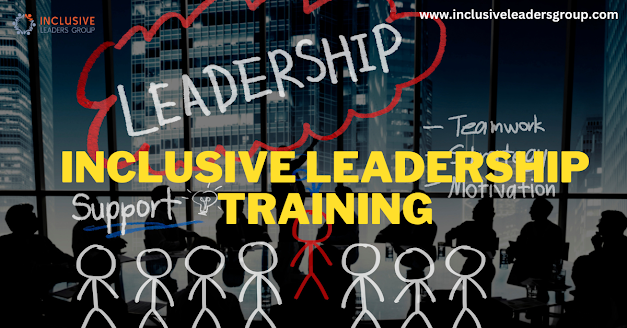Key Components of Effective Inclusive Leadership Training
The requirement for inclusive leadership is more important than ever as the world gets more varied. In addition to promoting diversity, inclusive leadership fosters an atmosphere where each person’s distinctive viewpoint is respected and taken into account. In this post, we’ll examine the importance of inclusive leadership training, its advantages, and how it can be successfully implemented in businesses.
1). Introduction
Fostering an inclusive culture is not only morally right in a world that is changing quickly, but it is also crucial for organizations that want to succeed. One of the pillars of this cultural revolution is inclusive leadership, which focuses on encouraging each employee to contribute fully and honestly.
2). Understanding Inclusive Leadership
Fundamentally, inclusive leadership is about cultivating a culture in which differences are not only accepted but also valued. It entails appreciating the distinctive skills that people from varied backgrounds bring to the table.
3). The Importance of Inclusive Leadership Training
Training for inclusive leadership goes beyond simple compliance. It actively gives leaders the tools they need to work with diverse teams, capitalize on differences, and create a culture where everyone is appreciated and valued.
4). Key Components of Effective Inclusive Leadership Training

4.1) Building Awareness of Unconscious Bias
Promoting inclusion requires an understanding of and commitment to resolving unconscious bias. Training should promote self-analysis and offer countermeasures for these biases.
4.2) Developing Empathy and Cultural Competence
Leaders can establish deeper connections by demonstrating empathy. On the other hand, cultural competency equips leaders to communicate successfully with people from varied cultural backgrounds.
4.3) Fostering Effective Communication
Communication that is sincere and open is crucial. While fostering a secure environment for discussion, inclusive leadership training should place an emphasis on active listening and clear expression.
4.4) Encouraging Collaboration and Team Building
By recognizing all viewpoints, inclusive leaders encourage collaboration. Training should place a strong emphasis on cooperative, barrier-breaking team-building exercises.
5). Implementing Inclusive Leadership Training: Best Practices
5.1) Customization to Organizational Culture
Successful training initiatives reflect the culture and values of the company. It should be customized to handle particular difficulties and chances in the workplace.
5.2) Engaging Leadership Participation
A strong message is sent when leaders actively participate in training. Their dedication cultivates a culture in which inclusion is supported on all fronts.
5.3) Continuous Learning and Adaptation
Leadership that is inclusive is a lifelong endeavor. To ensure that leaders are prepared to tackle new issues, training should develop in tandem with societal changes.
6). Measuring the Impact of Inclusive Leadership Training
6.1) Quantitative Metrics
Employee engagement surveys and demographic changes in leadership positions are two quantitative indicators that can be used to evaluate the success of inclusive leadership programs.
6.2) Qualitative Observations
Focus groups or anonymous input that reveals qualitative insights can be used to better understand cultural trends and problem areas.
Challenges and How to Get Over Them
7). Challenges and Overcoming Them
7.1) Resistance to Change
It’s typical to encounter resistance while bringing fresh ideas. This change can be made easier by openly addressing worries and showcasing successful results.
7.2) Sustaining the Momentum
After the initial excitement wears off, embedding practices into daily routines and holding leaders responsible are required to keep the momentum of inclusive leadership going.
8). The Role of Inclusive Leadership in Employee Well-being
A sense of belonging and psychological safety are essential elements of employee well-being, and inclusive leadership promotes these elements. Burnout is decreased and job satisfaction is increased.
9). Inclusive Leadership Beyond the Workplace
The tenets of inclusive leadership apply to interactions outside of the workplace and have an impact on how leaders behave in local communities and in society as a whole.
10). Creating a Comprehensive Inclusive Leadership Strategy
Recruitment, talent development, and succession planning are all included in a comprehensive strategy. It makes use of many viewpoints to promote innovation and expansion.
11). Case Studies: Organizations Championing Inclusivity
Real-world knowledge about the practical advantages of inclusive leadership in raising morale, productivity, and innovation can be gained through studying successful firms.
12). Inclusive Leadership in Remote Work Settings
To ensure that all voices are heard in virtual workspaces, even more intentionality is required. Even with minor modifications, inclusive leadership strategies are still important today.
13). Future Trends in Inclusive Leadership
The future of leadership will be shaped by the development of technology, generational shifts, and globalization. Leading from a place of inclusivity will be essential in navigating these changes.
Conclusion
Not just a catchphrase, inclusive leadership is a transforming strategy that encourages cooperation, creativity, and development. Organizations may create a better, more equitable future by putting a high priority on inclusive leader training. Get your free assistance by calling now at the professional Inclusive Leaders Group.




Comments
Post a Comment